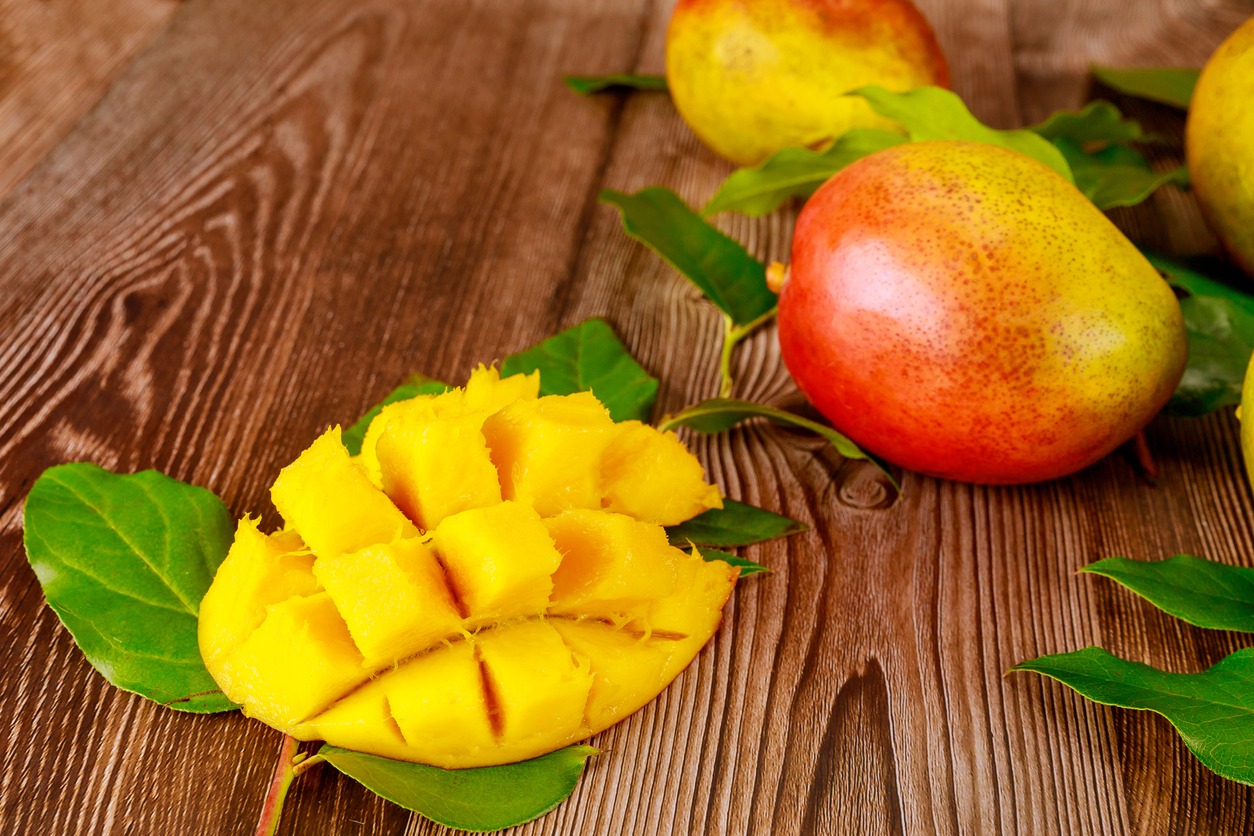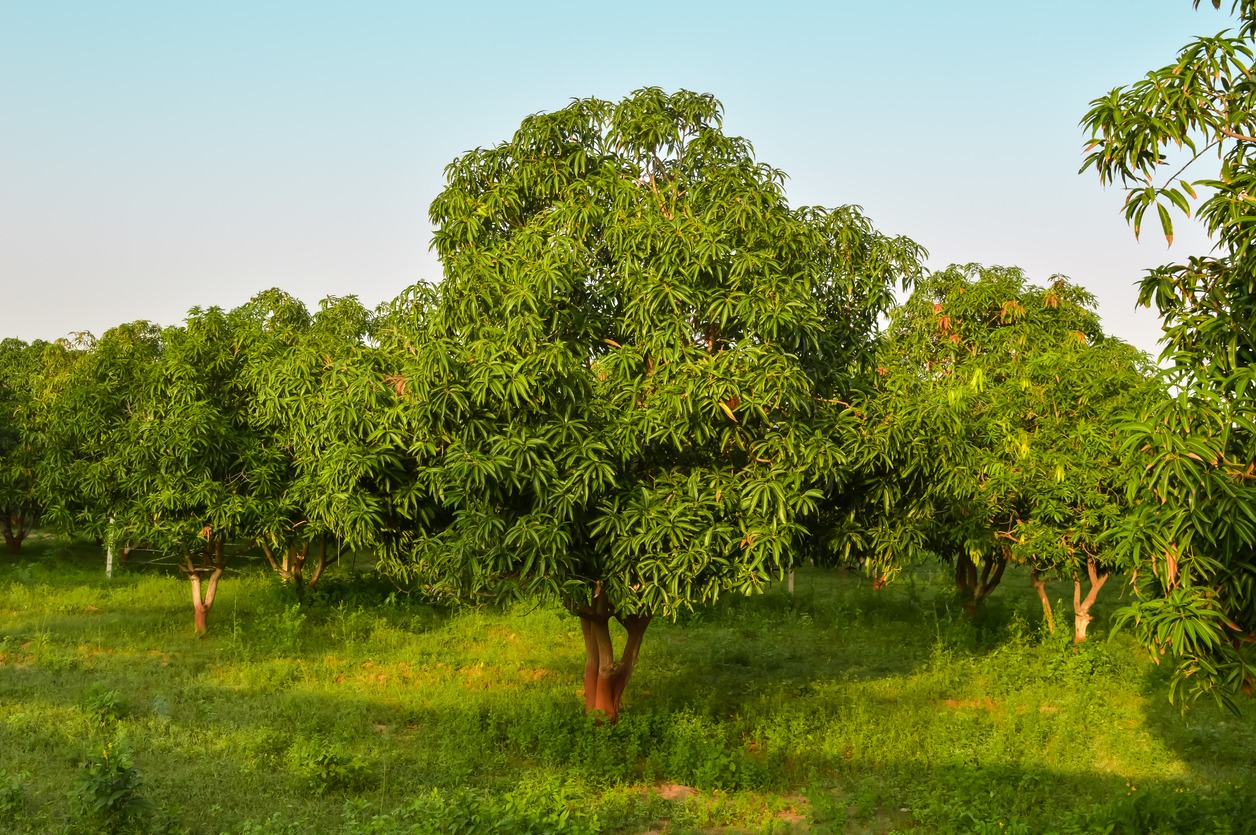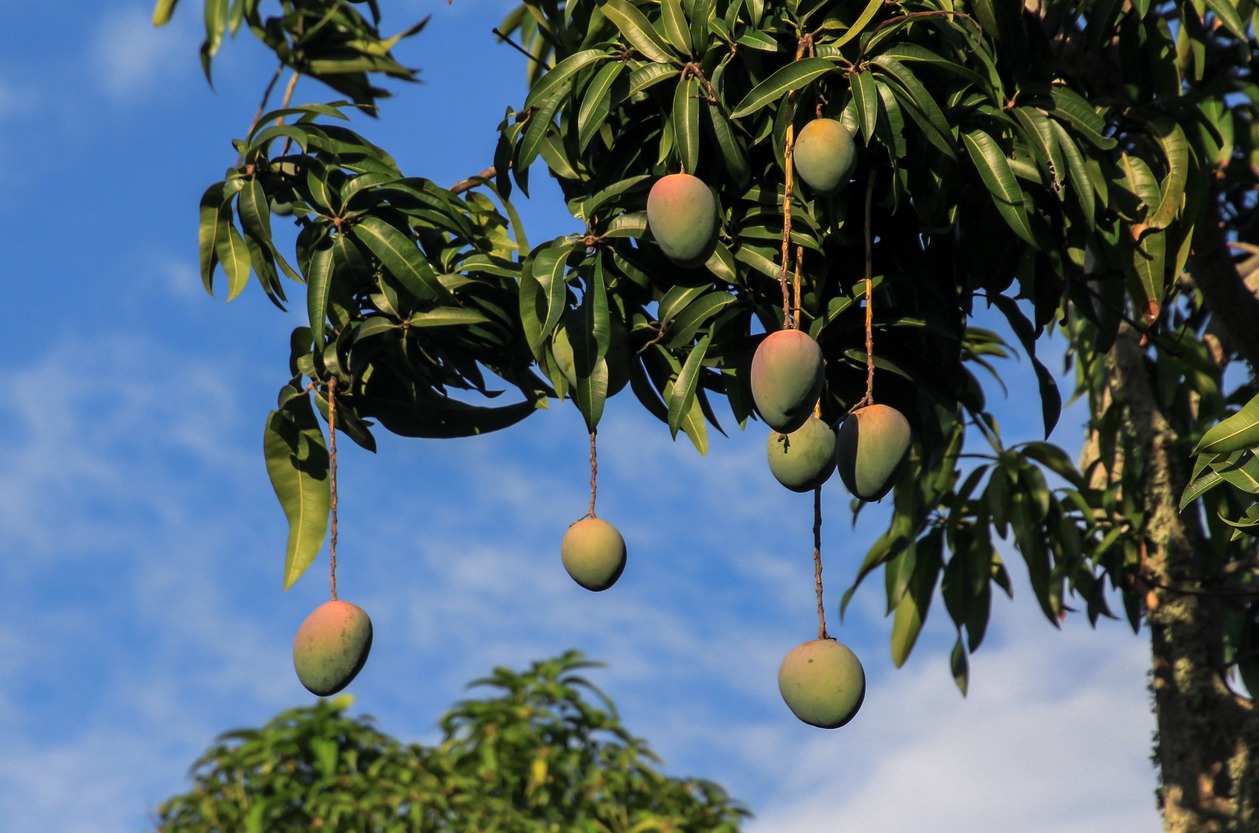The mango tree (Mangifera indica) is well-known for its deliciously sweet fruits that are used in many dishes and desserts. If you happen to like mango and are interested in agriculture, you have probably wondered about their lifespan and how long it takes for a mango tree to bear fruit. You will learn this and more as you continue on.
What is a Mango?

Native to South Asia and other tropical countries, mango is one of the world’s most highly cultivated tropical fruit. The flesh of the mango is typically orange or yellow in color, but the skin can be found in quite a range of colors. You can see yellow, orange, red, green, or even a mixture of them all in the skin of the mango. It will depend on the ripening process, the variety of mango, and some other chemical processes that affect the appearance of a mango.
Mango is a stone fruit because it contains a stone (or a pit). The seed of the mango is found inside the stone, which can be cut open to get the seed.
Mango Tree Lifespan

Mango trees have an incredible lifespan. It can stay alive for around 100 to 200 years, bearing fruits for generations to come. Some mango trees can even live up to 300 years. A mango tree often outlives whoever it planted. This long lifespan allows them to reach incredible sizes – an average mango tree is around 100 feet tall.
During its early stage, a mango tree can be small and thin. As time goes by, its branches grow longer and bigger, the trunk gets bigger, the roots are more established, and the tree matures. After reaching the maturity stage, it starts to bloom and bear fruits. Mango trees begin to fruit at the age of five, but it’s also possible that they bear fruit as early as three to four years old. The trees can produce fruits in large numbers.
While the peak of its fruiting stage is between 10 to 20 years, a healthy mango tree can bear fruit throughout its whole life. Once they start bearing fruits, mango trees can bear ripe fruits every year for ten years (peak stage), and after that, they will only bear fruit every other year.
The lifespan of a mango tree includes five different growth stages, such as:
- Seed – The mango seed is usually medium-sized, white to brown in color, and is rough in texture. It needs to be dried out before planting. Dark brown seeds are usually best for planting mango trees.
- Germination – The mango plant begins to grow roots and sprout dark green shoots during this stage. It’s often preferable to germinate mango seeds in containers before planting them in the garden.
- Seedling – Once the seeds become seedlings, you need to be careful. It’s a tricky stage since mango stems are usually quite delicate at first. Seedlings need constant care and a lot of water before growing into a young tree.
- Maturation – Once the mango seedlings are transplanted to the garden properly, the mango tree can grow and reach its mature size. Gradually, the tree will harden and become sturdy. Seed-grown trees don’t need much care at this point.
- Flowering – This is the final stage where the mango tree finally grows flowers to be able to bear fruit. Generally, this will happen for five to ten years into the tree’s growth. A properly cared mango tree will remain in this flowering stage for 90 years or more.
Some gardeners sometimes coax mango cultivars into bearing fruit every year. Grafted mango trees can bear fruit every year as grafted mango trees share the same root network, but each part of the tree can bear fruit at different times. In some rare instances, both the parent and grafted trees can bear fruit every year.
Factors that Affect the Lifespan of a Mango Tree
The only way to ensure that the mango tree will grow up to its ideal lifespan is to plant and grow it under ideal conditions. Mango trees will not thrive outside their ideal natural habitat. Here are some of the factors that affect the lifespan of a mango tree:
Climate
Like in real estate, the degree that your mango tree will thrive depends on its location. Mango trees are best suited for places with a tropical climate – this is why mango is cultivated widely in South Asia, Southeast Asia, East, and West Africa, tropical Americas, and the Caribbean. But you can plant it anywhere with the USDA hardiness zone 9 and above. This means you shouldn’t plant a mango tree in a place where temperatures dip below 20 degrees Fahrenheit.
In the United States, warm regions of California, Florida, Hawaii, and other areas along the Gulf of Mexico are ideal places for mango trees.
Mango trees prefer areas that get much sunlight. A mango tree should be exposed to the sun for at least six hours to grow, but they need more prolonged exposure to make fruits.
If the mango tree doesn’t get enough sunlight, it can cause yellowing of the leaves and having smaller or fewer fruits. The tree would have a shorter lifespan also in the long run.
Rainfall
The mango tree needs water to grow well, and rainfall will help a lot. Young mango trees need to be watered regularly, but mature trees don’t need water much often. Older trees with established trunks can live without being watered for weeks because their roots retain water. But during the summer, they need watering to stay cool.
In some areas, people don’t even water their mango trees because their area receives enough rainfall. Again, this is why location is important.
Nutrients
Like any other fruit-bearing tree, a mango tree must be planted in nutrient-rich soil, whether naturally rich or applied with organic or synthetic fertilizer. While it’s best to plant a mango tree in naturally rich soil, you can improve the soil quality where you intend to plant it by putting some compost, animal manure, or synthetic fertilizer.
But be careful not to over-fertilize as it can hurt your mango tree. Sometimes, too much fertilizer (especially synthetic ones) can cause root damage like burns. Make sure you acquaint yourself with how to apply the fertilizer best, or simply stick to compost to prevent damaging the tree.
Pests and diseases
Mango trees may last for centuries, but you will want to watch for fungal diseases and common pests. There are bugs that may eat and damage the leaves or feed on the tree. These must be controlled by applying insecticides or pesticides.
Some common diseases found in mango trees are powdery mildew, root rot, and anthracnose. Fungicides are needed to control these diseases to prevent further damage to the tree and fruits.

